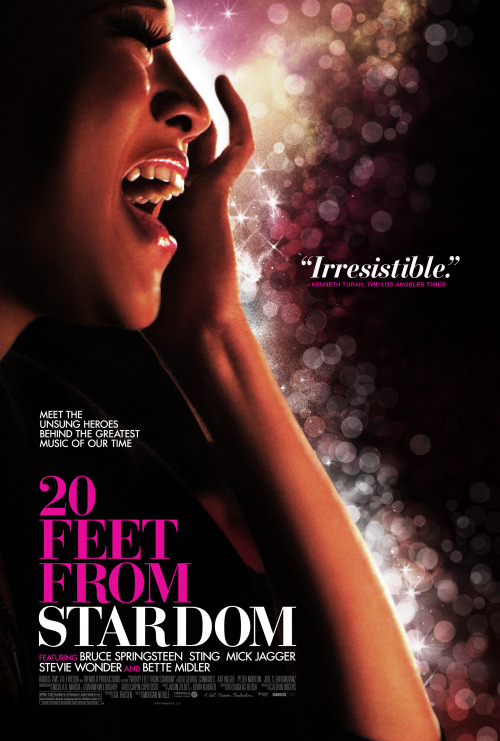|
Charlotte McCaffrey was the guitarist in a band called The Eyes when a punk with purple hair, ripped stockings and dressed in a garbage bag invited her to join an all-female music group. She did, even though none of her new bandmates knew how to play their instruments. They came a long way, however ,and McCaffrey wrote some big hits for her new band, The Go-Gos, including “Vacation,” “Head Over Heels,” and their first single (released in the UK, second in the US), “We Got the Beat.” That’s McCaffrey to the left of the stage. She’s the introverted Go-Go who is a proud songwriter but doesn’t crave the spotlight. Songfacts.com asked McCaffrey about writing “We Got the Beat” and she told them:
Here’s Smokey Robinson and the Miracles’ “Going to a Go-Go”: Familiar opening drum beat, no? Some random facts about the single’s chart position: “We Got the Beat” stalled at #2 on the Billboard Charts behind Joan Jett’s “I Love Rock and Roll” (which she didn’t write). That same year, 1982, “We Got the Beat” was competing with the Rolling Stones’ version of “Going to a Go-Go” released as a single off the live album Still Life . (I remember thinking the Stones looked old in 1982.) So, I mentioned that “We Got the Beat” was both the first and second single from the Go-Gos. A version was released in the UK before being re-recorded and released again in the States. Here’s the audio from their UK release on Stiff Records (their label-mates included The Specials and Madness): The sound quality is pretty different — the UK version is definitely flatter and the drums and guitars are muddier. The drums don’t start the song. The subsequent remix for US release in early 1982 is much cleaner and a bit faster. The AV Club has a very good retrospective of Beauty and the Beat, the Go-gos’ first record. There’s a lot there about the sexism they faced as the first all girl band to write and record their own songs to make a #1 record, and the change from punk to pop. The article quotes the great rock critic and historian Greil Marcus who reviewed the album in Rolling Stone:
More videos! Early footage of the punk rock phenomenon that was The Go-Gos in 1979. Here they cover Josie Cotton’s terrific “Johnny Are You Queer?” in 75 seconds (it’s worth it to hear Cotton’s version so you can hear the lyrics). The Go-Gos prove that, Yeah, they “still got it” from September 2012: One woman (and a looper): I’m only posting this as a sort of virtual milk-carton, can someone make sure that these kids were not performing under duress? Call home, children. This is not the same song — it’s “Wipeout” — but the group is called We Got the Beat youth percussion and came up on my YouTube search and I was impressed:
0 Comments
“Stand” by REM is the dumbest song I’ve ever written about here. (But there’s actual musicological stuff if you scroll down this page.) Who wants to learn the dance? Maybe Lego dancers will help you learn the moves. The thing is, I like the song and Michael Stipe is on the record as intentionally challenging his bandmates to write a dumb, bubblegum song, you know like “Yummy Yummy Yummy (I Got Love in My Tummy)” or the Archies’ “Sugar Sugar.” Seems like if he wanted to write bubblegum pop, he should have written about food. Oh wait, Weird Al helped them with that: The proof of a great pop record is whether Alvin and the Chipmunks do a cover and it looks like Berry, Buck, Mills & Stipe succeeded: So about the composition of this song, guitarist Peter Buck said:
He also intentionally used what he thought of as the overused wah-wah pedal to add to the stupidity of the song. (Before we get too far down this rabbit hole, we should point out that the lyrics are about being more aware of your surroundings and your life and are not all that different from “Once in a Lifetime” ["You may find yourself..."]. So lyrically, not so dumb. Musically, goofily so.) And perhaps the ultimate tribute to stupid pop songs is to be used as the theme song to a television show about a stupid person (Chris Elliott’s “Get a Life”): Wait, this is becoming as inane as the song itself. Surely we can find something musically interesting to discuss here? Yep. And it’s called the truck driver’s gear change. What I’m talking about here is the end of the song, when the chorus repeats and goes up two half tones. And then does it again. There’s a funny website that discusses what this is in a sarcastic manner: From the Frequently Asked Questions of The Truck Driver’s Gear Change Hall of Shame:
I love this website. I can’t remember when I first found it, but the comments on the songs are very funny and you can waste many minutes/hours/days here. From the commentary about “Stand“:
I, as you’ve seen, subscribe to the theory that R.E.M. does the gear change intentionally to conform to the standards of pure pop. What do you think? Comments welcome. The Talking Heads earned their chops playing at CBGBs, the infamous Lower East Side club on the Bowery where The Ramones, Television, Patty Smith, and others made their debuts (including the first American performance by The Police).  Actors as The Talking Heads This fall of 2013, a “based-on-a-true-story” Hollywood film called “CBGB” is coming out starring Alan Rickman as Hilly Kristal, the owner of the club. Apparently it’s available on DirectTV Video on Demand now until Oct 2, and then will be in theaters starting October 11, 2013. Here’s a trailer: A little more info is on this blogpost from Moviefone where you can also see a really annoying interview with Malin Ackerman who continually refers to Deborah Harry as “Blondie.” Presumably she’s also the girl who refers to Ian McCulloch as “Echo” and the rest of his bandmates as “the Bunnymen.” Anyway, the director is Randall Miller, who has mostly worked in television. The soundtrack will be good, and it might be fun to see actors playing our favorite punk rockers and new wavers… Field trip, anyone?  CBGB’s bathroom For the composition of Remain in Light (including “Once in a Lifetime”), Byrne built on the layered, production-centered composition techniques that developed from his collaboration with Brian Eno on My Life in the Bush of Ghosts. Essentially, the band went in with a blank slate and built up grooves, starting with a guitar lick or a drum beat. Others would add parts to the track. (All quotes are from Byrne’s How Music Works [2012].)
Basically, they took away many of the regular composition tricks. “While punk rock was celebrated for needing only three chords, we had now stripped that down to one.” (p. 159) Writing melodies over these tracks was necessarily more difficult but he points out that this method has one main advantage: “more emphasis gets placed on the groove.”
As for the lyrics…
Okay, enough reading, here’s a video from a British Talking Heads documentary: Americana singer-songwriter Josh Ritter goes off on a tangent at one of his concerts. He really milks that preacher style and looks like he’s receiving the light when he gets to the chorus: Byrne says they couldn’t play these songs as a four piece, but he does a credible job with Crowded House (I love the guy with the mallet in the center behind Neil Finn at keyboards [the "Eno seat"]). Pushing the trance aspect: The Smashing Pumpkins deconstruct (not to the best effect) “Once in a Lifetime” (I link for completeness, but there’s a reason I didn’t embed — it kind of sucks). Here’s another link to what it would sound like if Nico (from the VU) covered the song. A nice acoustic sound featuring a singer with a great accent: Just wanted to point out the great Talking Heads cover band names: This Must Be the Band, We Are Not Talking Heads, Start Making Sense, The Rocking Heads Does the ecstatic groove remain when the Muppets cover “Once in a Lifetime”?: If you like singing in harmony (and if you don’t, you may be on the wrong webpage), I highly recommend the feature documentary “20 Feet from Stardom.” The film focuses on background singers in rock/pop music, some of whom perform on stage and others who mostly appear on recordings. From the interviews it seems that the director, Morgan Neville, cast his net wide, but in the end focused his film on African American women. Which is fine, since they are clearly the dominant force in this corner of the music industry. Among the featured performers is Darlene Love, famously trapped in anonymous Phil Spector recording contracts and turning to cleaning houses before mounting a comeback. There’s Merry Clayton, the haunting voice on the Rolling Stones’ “Gimme Shelter” (“Rape! Murder!”) who is a goddess among back ups but who never got any traction as a solo performer. And there’s Judith Hill, set to break out on Michael Jackson’s last tour before he died. My favorite was Lisa Fischer whose musicality is a wonder to behold. The film deftly traces a trend in recorded music while still allowing for multiple, personal perspectives of individual women. But mostly, there’s the music. These women can sing. And they harmonize. And they swing. And as you watch you’ll realize how much you want to sing along. Highly recommended.
|
AuthorJack Cheng directs the Clemente Course in Dorchester, excavates in the Middle East, and writes in Waban, MA. Archives
October 2019
Categories |



 RSS Feed
RSS Feed
